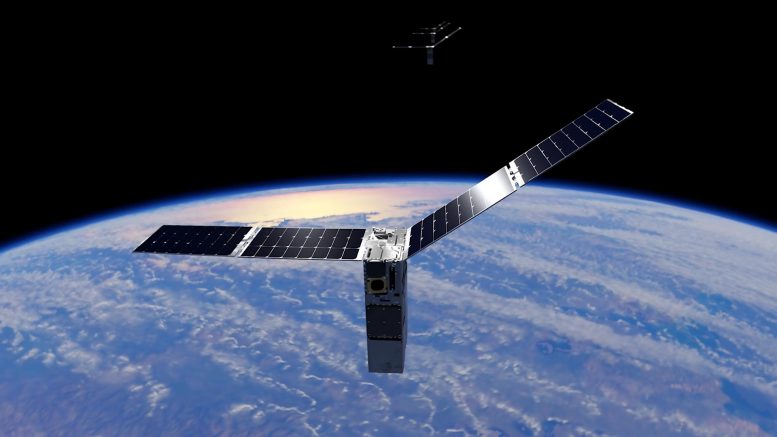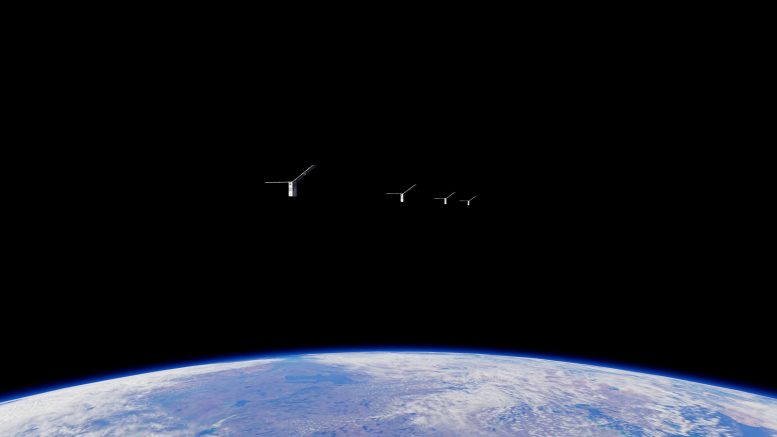

NASA’s Starling mission will test new technologies for autonomous swarm navigation on four CubeSats in low-Earth orbit. Credit: NASA’s Ames Research Center
NASA’s four Starling spacecraft, Blinky, Pinky, Inky, and Clyde, have successfully completed commissioning and are now in swarm experiment configuration. The spacecraft have successfully completed several mission activities working to advance satellite swarm technologies.
Payload commissioning was delayed due to several anomalies the team needed to investigate, including a larger volume of GPS satellite data than expected in the spacecraft to payload interface. Software updates have resolved most of these issues and the CubeSats are beginning their planned work.
Starling’s mission includes four main capabilities: network communications between the spacecraft, maintaining relative navigation and understanding each satellite’s position, autonomous swarm reconfiguration and maintenance to ensure the swarm can adjust when moving as a group, and distributed science autonomy to prove the ability to adjust experiment activities on their own.


NASA’s Starling six-month mission will use a team of four CubeSats in low Earth orbit to test technologies that let spacecraft operate in a synchronized manner without resources from the ground. The technologies will advance capabilities in swarm maneuver planning and execution, communications networking, relative navigation, and autonomous coordination between spacecraft. Credit: NASA/Conceptual Image Lab/Ross Walter
NASA’s Starling Mission
NASA’s Starling Mission represents a significant step forward in the field of satellite technology. This mission features a group of small satellites, known as CubeSats, named Blinky, Pinky, Inky, and Clyde. These CubeSats are designed to operate in a swarm, showcasing advanced concepts in autonomous satellite interactions.
The primary objectives of the Starling Mission include:
- Network Communications: The CubeSats are equipped to communicate with each other, forming an intricate network in space. This allows for coordinated activities and data sharing between the satellites.
- Relative Navigation: A key feature of the mission is the ability of each CubeSat to precisely understand its position relative to the others. This ensures accurate maneuvering and alignment within the swarm.
- Autonomous Swarm Reconfiguration: The satellites can autonomously reconfigure their positions within the swarm. This ability is crucial for adapting to various mission requirements and for maintaining optimal formation during operations.
- Distributed Science Autonomy: The CubeSats can independently adjust their experimental activities. This feature demonstrates the potential for future space missions to adapt and respond to environmental changes or mission objectives without the need for direct intervention from Earth.
The Starling Mission, through these innovative CubeSats, aims to advance our understanding and capabilities in satellite swarm technologies, potentially revolutionizing how we approach space exploration and satellite operations.
